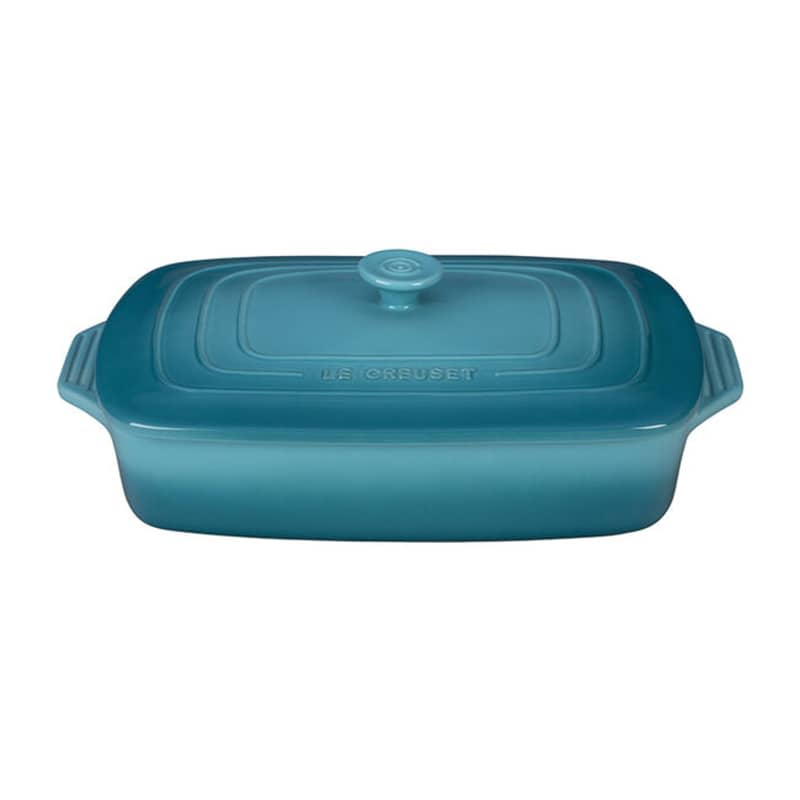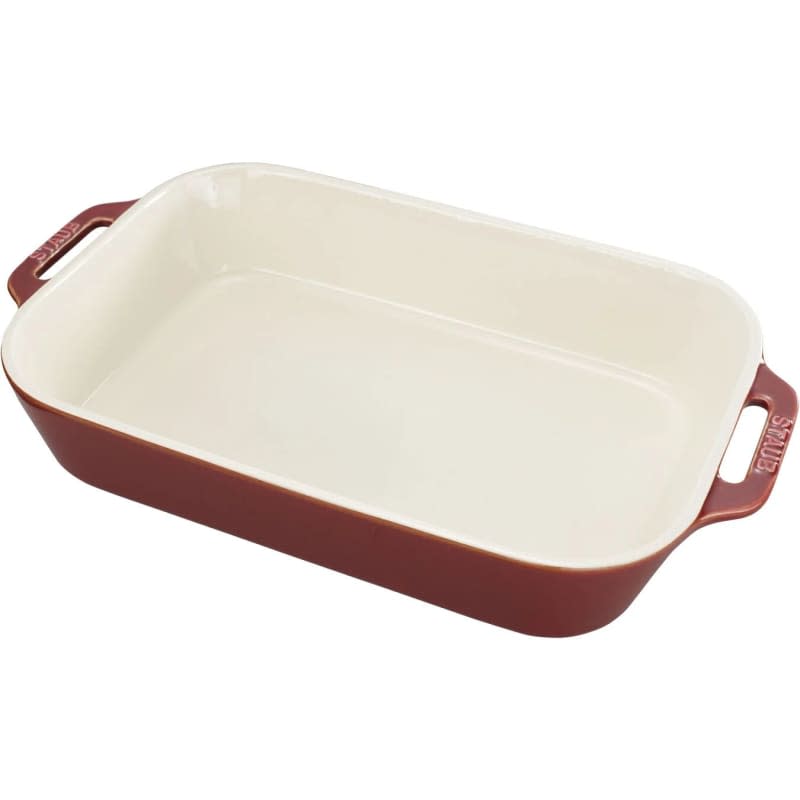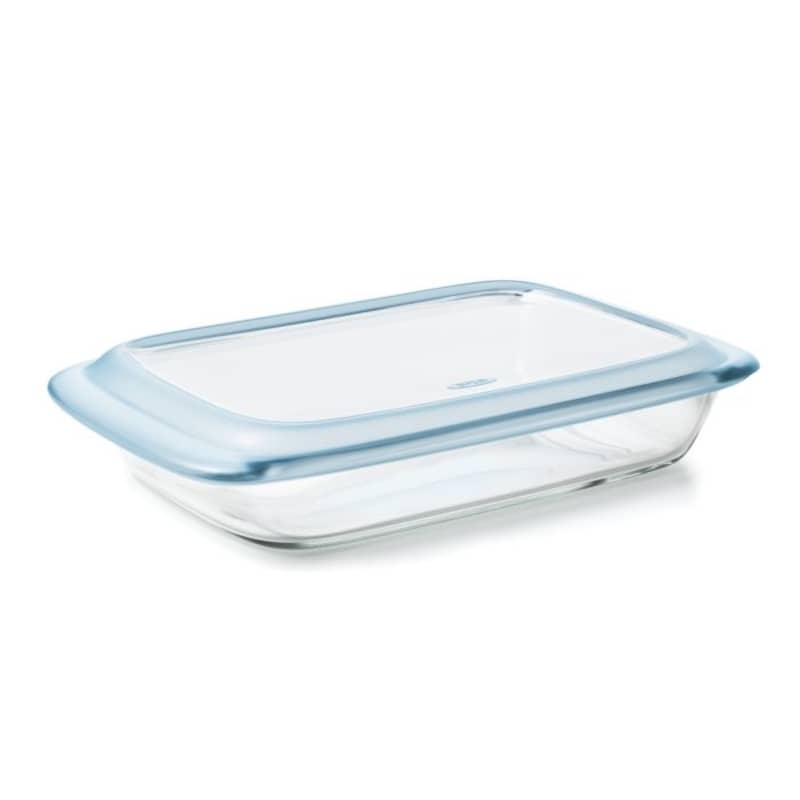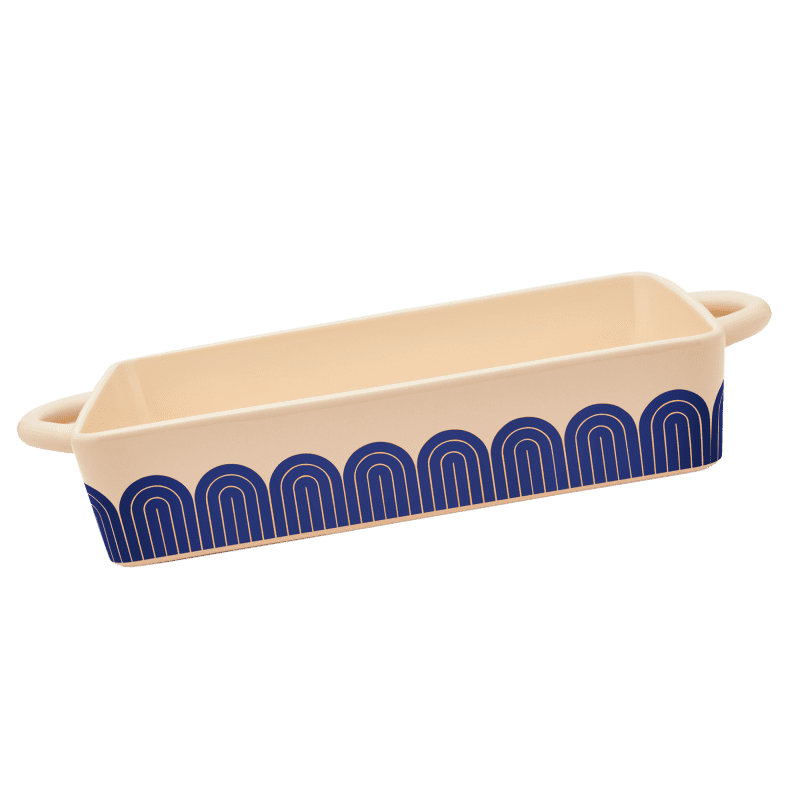The Absolute Best Casserole Dishes to Buy Right Now
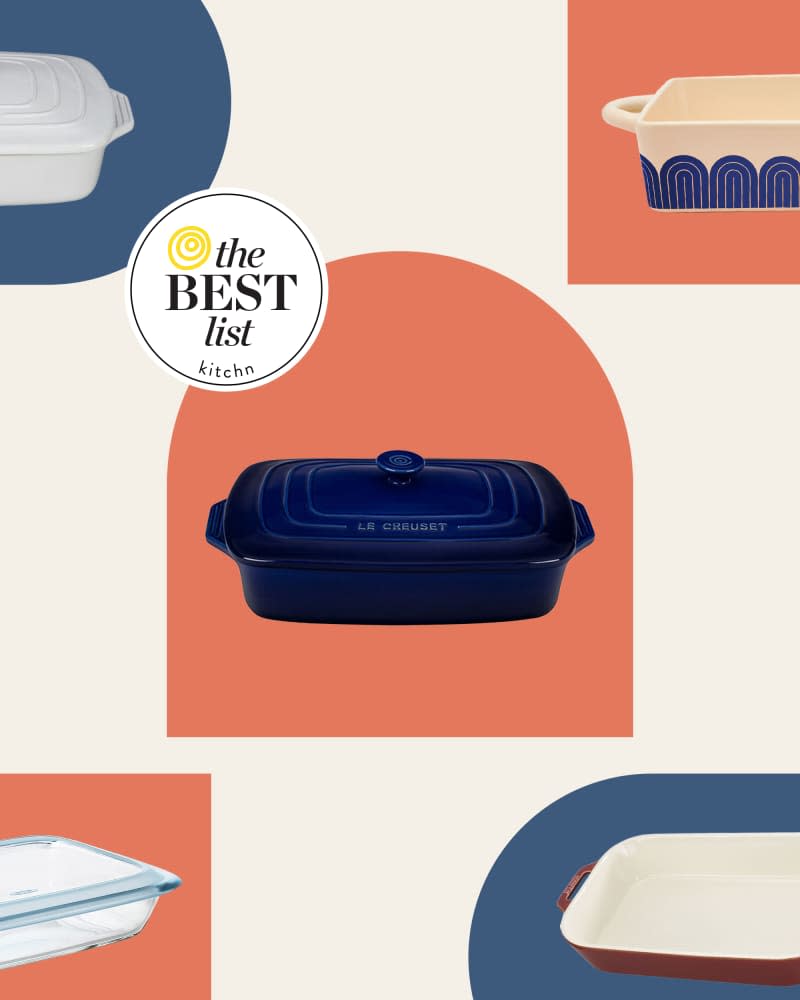
A casserole works hard, but the casserole dish works even harder. You know, the actual vessel your casserole recipe is cooked and served in. A casserole is almost like an edible greeting card for holidays, housewarmings, and beyond and it’s the ultimate one-pan solution to feed a crowd at home, but the dish itself — well, where do we start?
It has to hold up in the oven, be easy to pick up and transport to the table or to a potluck, and clean up in a flash. If you’re into meal prepping, you’ll also want it to make the long journey from freezer to oven to table without shattering (nothing like an explosion to ruin dinner!). And if it looks good enough to serve out of, well, that’s a huge bonus.
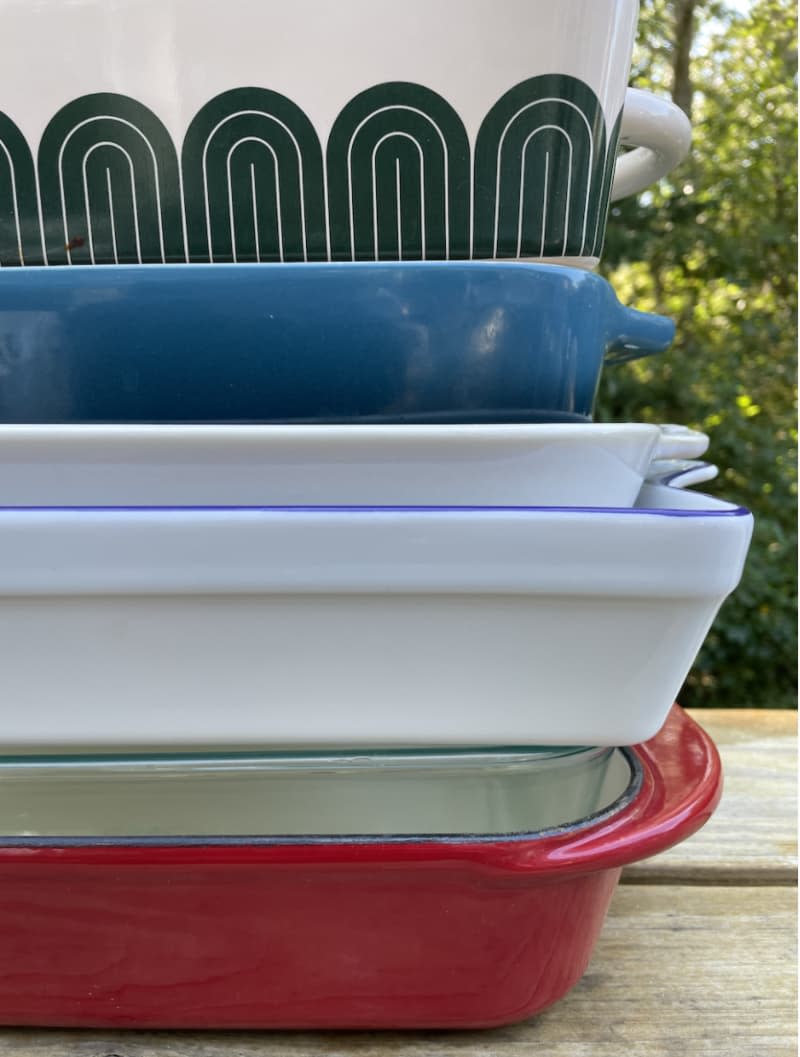
Best Casserole Dish with a Lid: Le Creuset Rectangular Casserole
This gem of a casserole dish from Le Creuset not only cooks beautifully thanks to the nonstick and even heat distribution of the enameled stoneware, but the lid brings the dish into a league of its own. The lid is also made of enameled stoneware, so it’s oven-safe up to 500°F and can be placed directly on top of a blazing hot dish, keeping food hot for up to three hours.
The dish cleans easily, too, and has a glazed bottom that doesn’t easily scuff oven racks or dinner tables. Which brings me to my next point: the casserole dish is gorgeous for serving right at the table, so it’s an absolute joy to use.
Le Creuset can be expensive, yes, but this is relatively wallet-friendly piece of versatile cookware that’ll get used regularly for dinners at home or holiday potlucks.
Specifications
Materials: Stoneware (ceramic)
Capacity: 3.5 quarts
Weight: 5.75 pounds without lid; 9 pounds with lid
Handles: Tab-style
Use and care instructions: Oven-, broiler-, microwave-, freezer-, and dishwasher-safe
Rating Criteria
Performance: 5
Ease of use: 5
Cleanup: 5
Durability: 5
Who it’s best for: If you’re looking for a dish with a lid because you frequently make casseroles to bring for brunch or potlucks, this is the one for you.
Good to know: It comes in five fun colors (including the brand’s signature Cerise) and has a 10-year warranty.
Best Casserole Dish Without a Lid: Staub Ceramic Rectangular Baking Dish
The simple-yet-attractive look of the Staub casserole dish, combined with its sturdy construction, makes it a stand-out. Its ceramic interior (and exterior!) is easy to clean, doesn’t easily get scratched or scuffed, and results in beautifully cooked food. It goes from freezer to oven with ease, too.
Specifications
Materials: Stoneware (ceramic)
Capacity: 4.75 quarts
Weight: 5.3 pounds
Handles: Looped
Use and care instructions: Oven-, broiler-, microwave-, freezer-, and dishwasher-safe
Rating Criteria
Performance: 4
Ease of use: 4
Cleanup: 5
Durability: 5
Who it’s best for: The cook who wants a high-quality, classic-looking casserole dish that can do it all — and at an affordable price. If you don’t need a lid, this is the way to go.
Good to know: Staub makes many other baking dishes that can complement this one, as well. You can grab them à la carte or get a few as a set.
Best Glass Casserole Dish: OXO Good Grips Glass Baking Dish with Lid
A common concern with glass casserole dishes is that they can shatter if exposed to extreme temperature changes, like going from the freezer to the oven. However, this OXO dish is made from durable borosilicate glass, which is treated to be temperature shock-resistant. It survived my freezer-to-oven test totally unscathed, going directly from the freezer into a 375ºF oven.
Specifications
Materials: Borosilicate glass; plastic lid
Capacity: 3 quarts
Weight: 4.5 pounds
Handles: Tab-style
Use and care instructions: Dish is oven-, microwave-, freezer-, and dishwasher-safe
Rating Criteria
Performance: 4
Ease of use: 4
Cleanup: 5
Durability: 4.5
Who it’s best for: At this budget-friendly price, it’s great for any home cook. Because it’s clear and inexpensive, I especially recommend it for novice cooks who might need to be able to monitor the doneness of whatever it is they’re cooking.
Good to know: Again, while it can flawlessly travel from the freezer to the oven, this dish is not to be used under the broiler, per the manufacturer’s guidelines.
Best Casserole Dish With Handles: Great Jones Hot Dish
With its retro and colorful design, this Great Jones dish is a showstopper, which means it aced the aesthetics test. It also aced every other test, and made amazing casseroles. The handles were also the best of the bunch: large, looped, and perfect for grabbing.
One thing to note is that the uncoated ceramic bottom can easily get scuffed by oven racks and can also scuff dinner tables, so make sure to use a heat-resistant mat if you’re serving right after cooking. I love everything else about this casserole dish though, and think you will too.
Specifications
Materials: Stoneware (ceramic)
Capacity: 4 quarts
Weight: 5 pounds
Handles: Looped
Use and care instructions: Oven-, microwave-, freezer-, broiler-, and dishwasher-safe
Rating Criteria
Cooking: 5
Ease of use: 5
Cleanup: 4
Durability: 4.5
Who it’s best for: Anyone who wants a stunning casserole dish. Because of the large loops, I also really like this for anyone who has a hard time picking up some pots and pans in the kitchen.
Good to know: The Hot Dish comes in four delightful colors: Broccoli, Mustard, Taffy, and Blueberry. One small note: Great Jones doesn’t mention that this dish is freezer-safe, but it worked great during my tests.
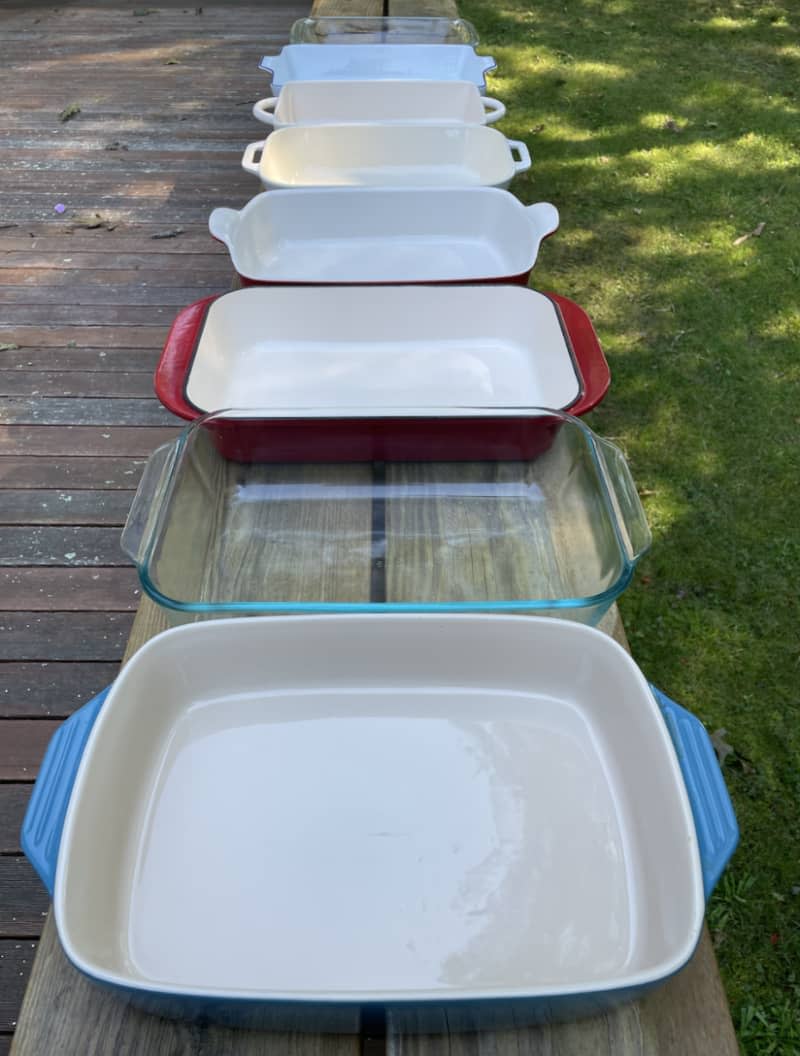
How We Tested the Best Casserole Dishes
Make make-ahead spinach and feta egg casserole, freezing it and baking it from frozen to make sure the dishes can handle the temperature changes.
Cut each casserole with metal knives and spatulas to see if the dish scratches.
Clean each casserole dish by hand after every test.
If you’re counting, that means I made 24 casseroles in a single month. That’s a whole lot of comfort food for my 1.5-person household (1 adult + 1 toddler)!
How We Evaluated the Best Casserole Dishes
I rated all of the casserole dishes based on the following criteria, on a scale of 1 to 5 (1 being the worst and 5 being the best):
Performance: Did the food cook evenly? Was the dish able to go from freezer to oven without shattering?
Ease of use: How comfortable was it to lift, hold, and maneuver the casserole dish?
Cleanup: How easy was it to clean?
Durability: Did the dish scratch, crack, or become otherwise damaged?
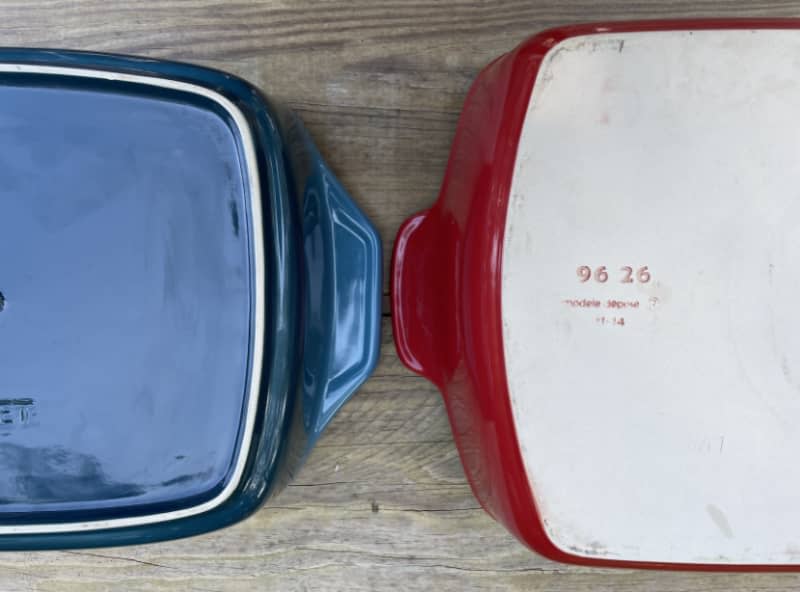
What’s The Best Material for a Casserole Dish?
Casserole dishes are typically made from a few types of materials. Here are the pros and cons of each popular material.
Glass
Simple and affordable, glass casserole dishes have one big advantage: You can easily monitor cooking (and especially browning!) around the sides and bottom of the casserole. However, glass also has its limitations. Glass can crack or even shatter when exposed to extreme temperature changes, like going from the fridge or freezer to the oven. Of course, this can happen with ceramic, but it’s more common with glass.
Ceramic
Ceramic casserole dishes fall into couple of different categories. Here are the two most common ones.
Stoneware: Stoneware is a durable, mostly nonporous clay product that has been fired between 2,150 and 2,300ºF. Stoneware casserole dishes have glazed interiors and glazed or unglazed bottoms. Unglazed undersides easily get scuffed by oven racks and while these scuffs are pretty impossible to remove, they don’t hurt performance.
Porcelain: Porcelain is fired at an even higher temperature than stoneware (sometimes up to 2,600ºF). It is nonporous and naturally nonstick, but generally more fragile.
Enameled Cast Iron
Cast iron is well-known for its heat retention and browning capability — as well its heft, so watch out! Enameled cast iron casserole dishes can handle direct heat, like stovetop cooking, which other materials cannot do. They’re not super common, though.
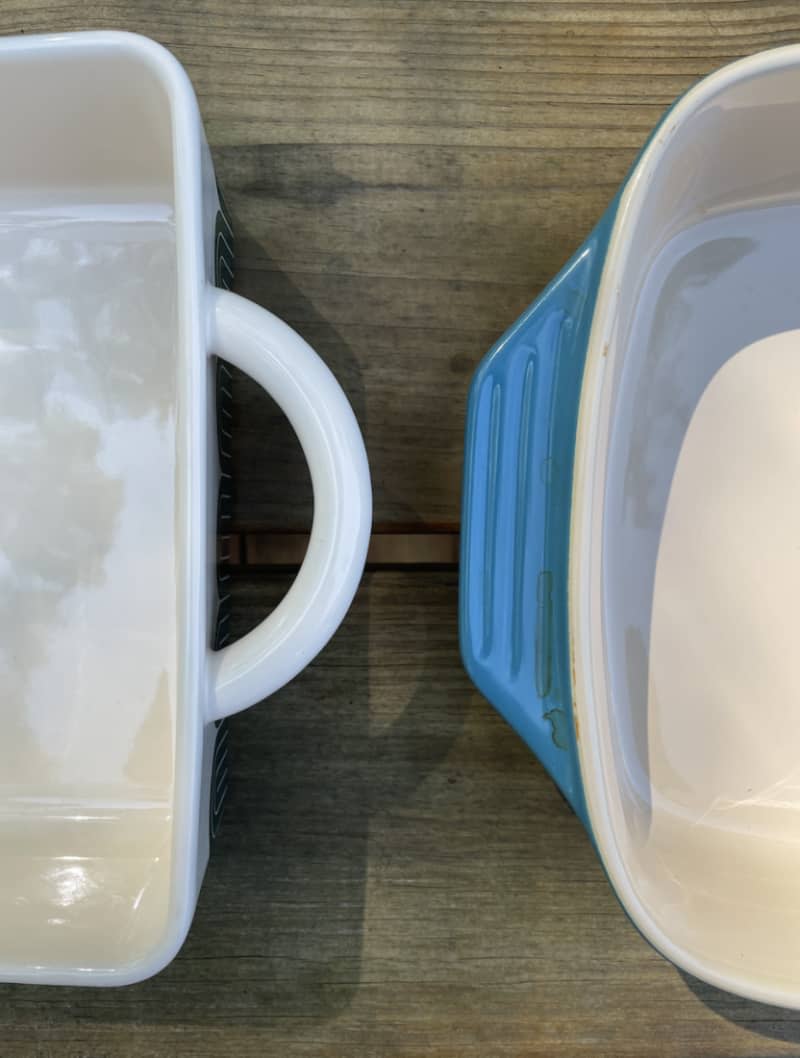
What Kind of Handles Are Best for a Casserole Dish?
Handle design plays a huge role in how easy it is to move a casserole dish into and out of the oven, and there are two main types of handles.
Tab-style handles
When the handle is a solid extension of the dish, it’s known as tab-style. Some casserole dishes have short, stubby tab handles, while others extend almost the entire width of the dish. During my tests, I found that the length of the tab didn’t matter as much as the width, but tab-style handles that measured less than an inch wide are much harder to hold when you’re wearing thick oven mitts. Le Creuset’s casserole dish has tab-style handles that are one-inch wide and have grooves on the tops and undersides, adding to the grip factor.
Looped handles
In general, casserole dishes with looped, half-moon-shaped handles are easier to hold onto than table-style handles and offer a more secure grip. In particular, I love the large loop handles on the Great Jones Hot Dish. With a 1.25-inch-wide opening, these handles are a standout and feel secure to grasp, even with bulky oven mitts on.
What’s the Best Size for a Casserole Dish?
There are many different sizes and shapes of casserole dishes out there, and the right one for you depends on how large of a group you typically feed and what recipes you want to make. The dishes I tested have 3- to 5-quart capacities and are all roughly 9 by 13 inches — the perfect size to accommodate a standard casserole recipe.
However, despite their size similarities, the weight of the casserole dishes varies dramatically. The heaviest dish weighed a whopping 11.2 pounds without any food, which made it hard to carry around the kitchen, put in and out of the oven, and maneuver in the sink with soapy hands. My favorite casserole dishes weighed around 5 pounds sans food, making them easy to lift.
Depth was another key factor, determining both how well it cooked casseroles and how easy the dish was to use. I preferred the Goldilocks dishes: Those that were not too shallow or too deep, but just right. With shallow dishes at about 2.25 inches deep, my oven mitt would touch the top of the casseroles when pulling them out of the oven. And dishes that were too deep inhibited browning, not allowing the oven’s hot air to circulate around food as readily. The best dishes I tested are 2.5 to 2.75 inches deep — deep enough to prevent my oven mitt from squashing food and shallow enough to allow for proper browning.
Should A Casserole Dish Have a Lid?
A lid is useful if you want to keep a casserole hot for a long period of time, like for a brunch or potluck. Most casserole dishes don’t come with lids or if they do, are made of hard plastic, so Le Creuset’s version with an oven-safe lid is a strong selling point. The dish’s ceramic lid keeps a fresh-from-the-oven casserole hot for up to three hours (!!!) and works exceptionally well when it comes to transporting the casserole. And because the lid is ceramic, it can be used in the oven to cook a covered casserole, should a recipe require it.
Lids made of plastic are fine for transport and storing leftovers, but can’t be put on a blazing-hot casserole dish and definitely aren’t oven-safe. That being said, if you’re not planning on road-tripping with your baked meatballs or mac and cheese, you might not care about having a lid at all.
How Easy Is It to Clean a Casserole Dish?
Casserole dishes should be relatively easy to clean and not retain odors or stains, but I do have some small quibbles about the ones I tested. When I was evaluating the ease of clean up, I used the same brand of sponge and dish soap after making the cheesy meatball casserole — the messiest of all the casseroles I tried — and the cleaning times ranged from from 35 seconds to 2 minutes and 37 seconds long.
Why You Should Trust Us
I’m a professional recipe developer and food writer; my work can be seen in Cook’s Country (magazine and television show), America’s Test Kitchen Kids cookbooks, Serious Eats, Hannaford’s Fresh magazine, and Kitchn.
Kitchn’s Best List Promise
We will do our homework, going wildly in depth with our testing. But we condense the info into easy, breezy summaries so that you can see what we picked and why, then move on with your life. Because we know you’re busy!
More Best Lists
Do you have a question about casserole dishes? Let us know in the comments!
